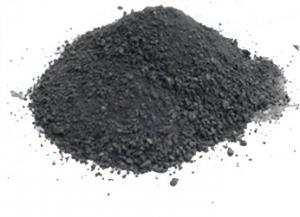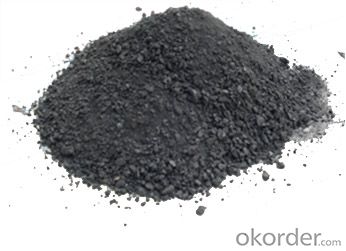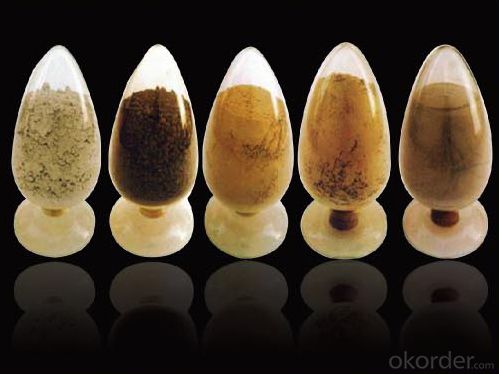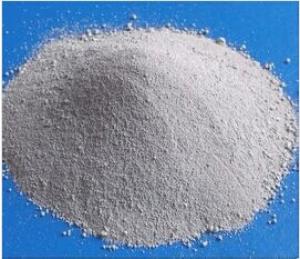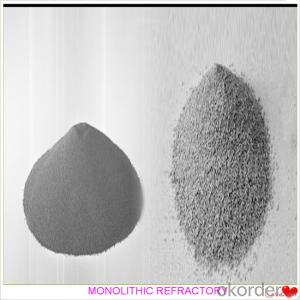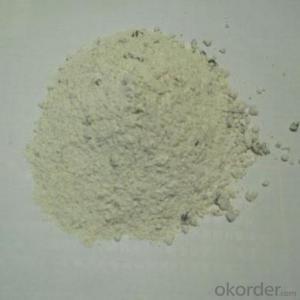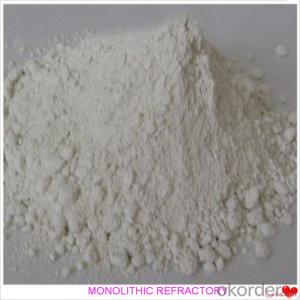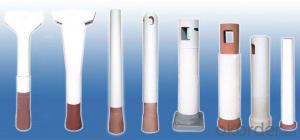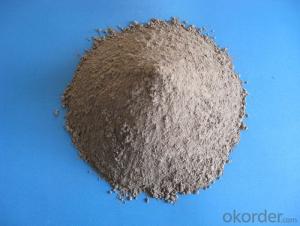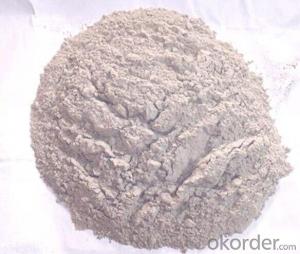Monolithic Refractories for Iron and Steel Industry:Gunning Mass Refractory Material
- Loading Port:
- Shanghai
- Payment Terms:
- TT or LC
- Min Order Qty:
- 20000 kg
- Supply Capability:
- 100000000 kg/month
OKorder Service Pledge
OKorder Financial Service
You Might Also Like
General Information of Gunning Mass
Gunning mass refractories is product that is used in various part of furnace as Monolithic Refractories that added hydraulic alumina cement to refractory aggregate.
Our Company is producing suitable product to installation and working condition through a quality control, this product which is minimizing alumina cement for using various dispersants and ultra fine powder so it has excellent abrasion resistance, erosion resistance, spalling resistance and chemical resistance . It widely used in part of various industrial furnace including incinerator, nonferrous metal furnace etc.
Features of Gunning Mass
High refractoriness, High refractoriness under load
High density, low porosity
Good slag resistance and corrosion resistance
High strength and wear resistance
Good resistance to flake performance
Good thermal shock stability
Scouring resistance
Good hot strength
Technical Data Sheet of Gunning Mass
CA-190 | CA-185 | CA-180 | CA-175 | CA-170 | CA-165 | CA-160 | CA-155 | CA-150 | CA-140 | |||
Properties | ||||||||||||
Application Limit Temp | 1,800 | 1,800 | 1,750 | 1,700 | 1,700 | 1,650 | 1,600 | 1,550 | 1,500 | 1,400 | ||
Bulk Density (g/cm3) | 2.9 | 2.85 | 2.8 | 2.6 | 2.5 | 2.3 | 2.15 | 2.1 | 2.1 | 2 | ||
Water Required for Casting(%) | 9-10 | 9-10 | 11-12 | 11-12 | 10-13 | 11-14 | 12-15 | 13-16 | 13-16 | 13-17 | ||
CCS/MOR | 110ºCx24h | 55(9) | 30(6) | 30(6) | 30(6) | 25(5) | 25(5) | 20(4) | 20(4.5) | 25(5) | 20(5) | |
1,200ºCx3h | 50(8) | 35(7) | 35(7) | 30(7) | 20(4) | 17(3.5) | 15(3.5) | 15(2.5) | 17(4) | 14(3) | ||
1,400ºCx3h | 60(10) | 50(8) | 60(10) | 60(10) | 50(12) | 45(8) | 40(7) | 40(7) | 32(7.5) | - | ||
Permanent Linear Change(%) | 110ºCx24h | -0.03 | -0.03 | -0.06 | -0.06 | -0.06 | -0.06 | -0.06 | -0.06 | -0.06 | -0.06 | |
1,200ºCx3h | -0.1 | -0.1 | -0.15 | -0.15 | -0.2 | -0.2 | -0.16 | -0.3 | -0.25 | -0.3 | ||
1,400ºCx3h | -0.2 | -0.2 | -1 | -1 | -0.8 | -1 | -1 | -0.7 | - | - | ||
Thermal conductivity(W/m.k) | 400ºC | 0.95 | 0.95 | 0.92 | 0.92 | 0.8 | 0.72 | 0.68 | 0.68 | 0.65 | 0.6 | |
1,000ºC | 1.1 | 1.05 | 1.02 | 1.02 | 0.9 | 0.85 | 0.88 | 0.8 | 0.76 | 0.71 | ||
Chemical Analysis(%) | Al2O3 | 92 | 88 | 82 | 75 | 62 | 55 | 50 | 47 | 44 | 35 | |
SiO2 | - | - | 10 | 10 | 29 | 40 | 43 | 45 | 50 | 55 | ||
Photo of Gunning Mass
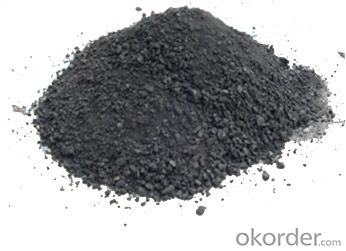
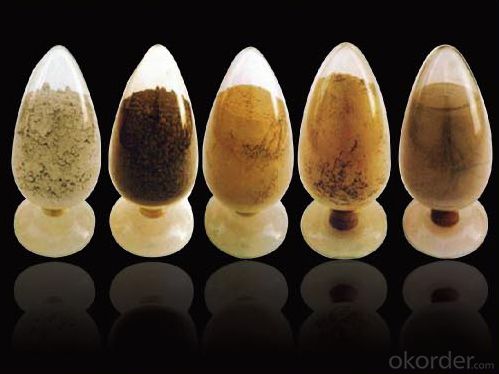
- Q: What is the role of monolithic refractories in blast furnaces?
- Monolithic refractories have a crucial function in blast furnaces, as they offer high-temperature resistance and excellent durability in the furnace's harsh operating conditions. Blast furnaces are utilized in the ironmaking process to transform iron ore into molten iron, and monolithic refractories are essential for lining the furnace's interior. Withstanding extreme temperatures is one of the main purposes of monolithic refractories in blast furnaces. The furnace's interior can reach temperatures as high as 2,500 degrees Celsius, and monolithic refractories are specifically designed to preserve their structural integrity and shield the furnace lining from thermal shock and erosion caused by these high temperatures. Monolithic refractories also provide insulation, preventing heat loss from the furnace. This is significant as it helps to maintain the desired temperature for efficient iron production. By minimizing heat loss, monolithic refractories contribute to energy conservation and improved overall furnace performance. Another critical role of monolithic refractories is to resist chemical attack from the molten iron and slag. The materials employed in blast furnaces, such as iron ore, coke, and limestone, undergo various chemical reactions during the ironmaking process. Monolithic refractories are engineered to withstand the corrosive effects of these reactions, ensuring a longer lifespan for the furnace lining. Furthermore, monolithic refractories offer exceptional mechanical strength and resistance to abrasion. The materials processed in a blast furnace, including iron ore and coke, can be abrasive. Monolithic refractories act as a protective barrier against this abrasive action, preventing damage to the furnace lining and extending its lifespan. In conclusion, the role of monolithic refractories in blast furnaces is to endure extreme temperatures, provide insulation, resist chemical attack, and offer mechanical strength against abrasion. These properties contribute to the efficient operation and longevity of blast furnaces, enabling the production of molten iron for various industrial applications.
- Q: What are the environmental considerations associated with monolithic refractories?
- Monolithic refractories, utilized in various high-temperature applications, pose several environmental concerns that must be taken into account. Firstly, the production of monolithic refractories necessitates the utilization of raw materials such as clay, silica, and alumina, which are frequently extracted from the earth, resulting in habitat destruction, soil erosion, and water pollution. Furthermore, the manufacturing process of monolithic refractories commonly involves considerable energy consumption and the emission of greenhouse gases. The firing of refractory materials necessitates high temperatures, often achieved through the combustion of fossil fuels, contributing to carbon dioxide emissions and climate change. These emissions have broad environmental consequences, including air pollution, acid rain, and ozone layer depletion. Additionally, the disposal of monolithic refractories at the end of their useful life can present environmental challenges. Although monolithic refractories are highly durable and long-lasting, there may come a time when replacement or repair is necessary. The disposal of refractory waste can be problematic as it often contains hazardous substances such as chromium, lead, and asbestos. Inadequate disposal methods can lead to contamination of soil and water, posing risks to both human health and the environment. To address these environmental concerns, efforts are underway to develop more sustainable refractory materials and manufacturing processes. For instance, alternative raw materials like recycled refractory materials or industrial by-products can be employed to decrease the environmental impact of mining. Moreover, the adoption of more energy-efficient manufacturing techniques, such as utilizing renewable energy sources or implementing advanced firing technologies, can help minimize greenhouse gas emissions. In conclusion, the environmental considerations associated with monolithic refractories encompass habitat destruction, energy consumption, greenhouse gas emissions, and waste disposal. Prioritizing sustainability and implementing measures to mitigate these environmental impacts, such as using alternative raw materials, enhancing manufacturing processes, and endorsing responsible waste management practices, are imperative for the refractory industry.
- Q: How are monolithic refractories used in the repair and maintenance of ladle and tundish linings?
- Monolithic refractories, widely utilized in the steel industry, are a specific type of refractory material employed for the repair and maintenance of ladle and tundish linings. These linings, integral to the transportation and treatment of molten metal during the steelmaking process, can deteriorate over time when exposed to high temperatures and corrosive conditions. This deterioration poses various issues, including heat loss, contamination of the molten metal, and reduced lifespan of the refractory lining. To tackle these problems, monolithic refractories serve as effective repair and maintenance materials. Typically composed of different refractory aggregates, binders, and additives, monolithic refractories are available in various forms like castables, gunning mixes, and ramming mixes. These materials are designed for easy application and shaping, conforming to the specific geometry and dimensions of the ladle or tundish lining. During the repair process, damaged sections of the lining are removed, and monolithic refractories are then applied. Castables can be poured and vibrated into place, while gunning mixes can be sprayed using a high-pressure gunning machine. On the other hand, ramming mixes are manually compacted into the lining using a ramming tool. Monolithic refractories offer several advantages when it comes to the repair and maintenance of ladle and tundish linings. Firstly, their flexibility ensures easy installation and shaping, resulting in a snug fit to the lining. This maximizes the effectiveness of the refractory lining in preventing heat loss and maintaining the integrity of the ladle or tundish. Secondly, monolithic refractories exhibit exceptional resistance to thermal shock and chemical attack. This durability enables them to withstand the harsh conditions encountered in ladles and tundishes. Even when subjected to repeated heating and cooling cycles, they remain intact without cracking or spalling, providing long-lasting protection to the lining. Lastly, monolithic refractories can be easily repaired and replaced as needed. The application and removal processes are relatively straightforward, facilitating efficient maintenance of ladle and tundish linings. This minimizes downtime and ensures the overall productivity of the steelmaking process. In conclusion, monolithic refractories play a vital role in the repair and maintenance of ladle and tundish linings. Their easy application, exceptional resistance to thermal shock and chemical attack, and ease of repair make them ideal materials for extending the lifespan and optimizing the performance of these linings in the steel industry.
- Q: How do monolithic refractories contribute to the overall efficiency of steel ladle operations?
- Monolithic refractories play a crucial role in enhancing the overall efficiency of steel ladle operations. They provide a protective lining that withstands extreme temperatures, chemical reactions, and mechanical stresses during the steelmaking process. This lining helps to retain heat and prevent heat loss, ensuring better temperature control and reducing energy consumption. Additionally, monolithic refractories minimize metal penetration and slag adhesion, improving ladle cleanliness and reducing the risk of clogging or blockages. Overall, the use of monolithic refractories in steel ladles promotes higher productivity, improved steel quality, and cost-effective operations.
- Q: How do monolithic refractories withstand the alkali attacks in cement kiln applications?
- Monolithic refractories are able to withstand alkali attacks in cement kiln applications due to their unique composition and structure. These refractories are made from a single material, which allows for a more uniform and dense structure compared to traditional brick refractories. When exposed to alkali attacks in cement kilns, monolithic refractories form a protective layer on the surface which acts as a barrier against the corrosive alkali substances. This protective layer is typically formed by reactions between the alkali substances and the refractory material, resulting in the formation of a stable compound that is resistant to further attacks. Furthermore, monolithic refractories have high chemical resistance, which enables them to withstand the aggressive conditions inside cement kilns. They are designed to have low porosity, which prevents the penetration of alkali substances into the refractory material. This reduces the chances of alkali attacks and prolongs the service life of the refractory lining. In addition, monolithic refractories are often made from materials with high melting points, such as alumina, silica, and magnesia. These materials have excellent thermal stability, allowing the refractories to withstand the high temperatures in cement kilns without significant degradation. This thermal stability is crucial in preventing the formation of cracks and spalling, which can lead to alkali penetration and subsequent damage to the refractory lining. Overall, monolithic refractories are specifically engineered to resist alkali attacks in cement kiln applications by forming a protective layer, having high chemical resistance, and exhibiting excellent thermal stability. These properties make them an ideal choice for lining cement kilns and ensuring their long-term performance and durability.
- Q: What are the advantages of using plastic refractories in the iron and steel industry?
- There are several advantages of using plastic refractories in the iron and steel industry. Firstly, plastic refractories have excellent thermal shock resistance, which means they can withstand rapid changes in temperature without cracking or breaking. This is crucial in the iron and steel industry where the materials are exposed to extreme heat during the manufacturing process. Secondly, plastic refractories have good workability and can be easily shaped and molded to fit various complex shapes and sizes of furnaces, ladles, and other equipment used in the industry. This makes them highly versatile and adaptable to different production requirements. Additionally, plastic refractories have excellent resistance to chemical attacks from molten metals and slags. They can withstand the corrosive nature of these materials and maintain their structural integrity, ensuring longer service life and reducing maintenance costs. Lastly, plastic refractories have good bonding properties, allowing them to adhere well to existing refractory linings. This helps to extend the lifespan of the overall refractory system and reduce the need for frequent repairs or replacements. Overall, the advantages of using plastic refractories in the iron and steel industry include thermal shock resistance, workability, chemical resistance, and good bonding properties, making them a preferred choice for lining and repairing furnaces and other equipment in this industry.
- Q: What are the recommended curing and drying procedures for monolithic refractories?
- The curing and drying procedures for monolithic refractories vary depending on the specific type and composition of the material. However, there are some general guidelines that can be followed. Curing involves allowing the refractory material to set and harden. This is achieved by subjecting the material to controlled temperature and humidity conditions. The purpose of curing is to develop the desired physical and chemical properties of the refractory, such as strength and resistance to thermal shock. Drying, on the other hand, involves removing moisture from the refractory material. This is important because moisture can cause cracking or spalling when exposed to high temperatures. Drying usually takes place after the curing process. The curing and drying procedures for monolithic refractories typically involve the following steps: 1. Preheating: Before applying the refractory material, it is necessary to preheat the surface where it will be applied. This prevents rapid moisture evaporation and ensures good adhesion of the refractory. 2. Mixing and application: The refractory material should be mixed according to the manufacturer's instructions and applied to the desired surface using appropriate techniques such as gunning, casting, or ramming. 3. Initial curing: After application, the refractory should be cured at a controlled temperature and humidity for a specific duration. This allows the material to set and strengthen. The curing temperature and duration may vary depending on the specific refractory material, but it is advisable to start with a lower temperature and gradually increase it. 4. Drying: Once the initial curing is complete, the refractory should be dried to eliminate any remaining moisture. This is done by gradually increasing the temperature in a controlled manner. The drying temperature and duration may vary depending on the specific refractory material, but it is important to avoid rapid temperature changes to prevent thermal stress and cracking. 5. Final curing: After drying, the refractory should be allowed to cool gradually to room temperature. This final curing step further enhances the strength and stability of the refractory. It is crucial to follow the manufacturer's guidelines and recommendations for the specific refractory material being used, as different materials may have different curing and drying requirements. Additionally, factors such as the size and shape of the refractory installation, as well as the surrounding environment, may also affect the curing and drying procedures. It is always advisable to consult with a refractory specialist or manufacturer to ensure the proper curing and drying procedures are followed for optimal performance and longevity of the monolithic refractories.
- Q: What are the advantages of using monolithic refractories in the iron and steel industry?
- There are several advantages of using monolithic refractories in the iron and steel industry. Firstly, monolithic refractories offer excellent thermal insulation properties. This means that they are able to withstand and retain high temperatures, which is crucial in the iron and steel manufacturing process. The ability to withstand extreme heat ensures that the refractories maintain their structural integrity, reducing the risk of failure and maintaining operational efficiency. Secondly, monolithic refractories have superior corrosion resistance. In the iron and steel industry, where materials are exposed to harsh chemicals and corrosive agents, the use of monolithic refractories helps to protect the equipment and structures from degradation. This not only extends the lifespan of the refractories but also reduces maintenance costs and downtime. Another advantage of monolithic refractories is their versatility. Unlike traditional refractory bricks, which are rigid and require skilled labor for installation, monolithic refractories can be cast or sprayed into various shapes and sizes. This flexibility allows for easier installation and customization, resulting in better lining design and improved performance. Additionally, monolithic refractories can be easily repaired or patched in case of damage, minimizing production disruptions. Furthermore, monolithic refractories have excellent mechanical strength and abrasion resistance. In the iron and steel industry, where materials are constantly being moved and processed, the refractories must be able to withstand mechanical stresses and abrasion. Monolithic refractories provide the necessary strength and resistance, ensuring that they can withstand the rigors of the industry without compromising performance. Lastly, the use of monolithic refractories in the iron and steel industry can lead to cost savings. Due to their versatility and ease of installation, monolithic refractories require less labor and time for installation, resulting in reduced installation costs. Additionally, their longer lifespan and resistance to corrosion and thermal shock minimize the need for frequent replacements, reducing maintenance and downtime costs. In conclusion, the advantages of using monolithic refractories in the iron and steel industry include excellent thermal insulation, corrosion resistance, versatility, mechanical strength, and cost savings. These benefits make monolithic refractories an ideal choice for lining furnaces, ladles, and other equipment used in the production of iron and steel.
- Q: What are the recommended storage and handling practices for monolithic refractories?
- The recommended storage and handling practices for monolithic refractories are crucial to ensure their optimal performance and longevity. Here are some key practices to follow: 1. Storage: Monolithic refractories should be stored in a clean, dry, and well-ventilated area. The storage facility should be protected from moisture, extreme temperatures, and direct exposure to sunlight. Ideally, the refractories should be stored on pallets or racks to prevent contact with the ground and minimize the risk of damage. 2. Handling: It is essential to handle monolithic refractories with care to avoid any physical damage. Refractories should be lifted and moved using appropriate lifting equipment, such as forklifts or cranes, to prevent excessive stress or strain on the material. Avoid dropping or dragging the refractories, as this can lead to cracks or fractures. 3. Packaging: If the monolithic refractories are supplied in packaging, it is important to inspect the packaging for any signs of damage or moisture before accepting the delivery. Damaged packaging can indicate potential damage to the refractory material. If any anomalies are noticed, it is advisable to inform the supplier immediately. 4. Moisture control: Monolithic refractories are susceptible to moisture absorption, which can lead to reduced performance and structural integrity. It is crucial to protect the refractories from direct contact with water or excessive humidity during storage and handling. If refractories become wet, they should be dried thoroughly before use to eliminate any absorbed moisture. 5. Stack height: When storing monolithic refractories, it is important to consider the stack height. Excessive stacking can result in pressure on the lower layers, leading to deformation or cracking. Follow the manufacturer's recommendations for maximum stack height to ensure the refractories' structural integrity. 6. Regular inspection: Regularly inspect the refractory material for any signs of damage or degradation during storage and handling. Look for cracks, spalling, or any other visible abnormalities. If any issues are identified, consult the manufacturer or a refractory expert for guidance on whether the material is still suitable for use. By following these recommended storage and handling practices, you can minimize the risk of damage to monolithic refractories and optimize their performance, ultimately extending their service life and ensuring their effectiveness in high-temperature applications.
- Q: How do monolithic refractories withstand the thermal cycling in aluminum smelting applications?
- Monolithic refractories have been specifically developed to endure the extreme thermal cycling conditions that arise in aluminum smelting applications. The exceptional properties of these refractories enable them to withstand the rapid and repetitive heating and cooling cycles without experiencing significant damage or failure. A key characteristic of monolithic refractories is their remarkable thermal shock resistance, which allows them to withstand sudden temperature changes without cracking or spalling. Throughout the aluminum smelting process, the refractories are exposed to extreme temperatures when molten aluminum is poured into the molds or when the molten metal comes into contact with the refractory lining. It is essential for the refractories to quickly absorb and dissipate heat to prevent any thermal shock damage. Furthermore, monolithic refractories possess a high thermal conductivity, which facilitates the efficient transfer of heat away from the refractory lining. This effectively reduces the risk of thermal stress and thermal fatigue. By dispersing the heat generated during the smelting process, the refractories minimize temperature variations within the lining, thereby preventing the occurrence of cracks or fractures. Moreover, monolithic refractories exhibit excellent chemical resistance, a crucial characteristic in aluminum smelting applications. These refractories are formulated to resist the corrosive effects of molten aluminum and other chemicals present in the smelting process. By offering resistance to chemical corrosion, the refractories help maintain the integrity of the refractory lining and extend its service life. Additionally, monolithic refractories are often reinforced with fibers or other structural materials to enhance their mechanical strength and durability. These reinforcements provide added resistance against mechanical stresses, such as thermal expansion and contraction, which arise during the thermal cycling process. In conclusion, the purpose of monolithic refractories is to withstand the thermal cycling conditions encountered in aluminum smelting applications. Their exceptional thermal shock resistance, high thermal conductivity, excellent chemical resistance, and enhanced mechanical strength enable them to endure extreme temperature fluctuations without experiencing significant damage. These refractories play a crucial role in maintaining the integrity and efficiency of the smelting process in the aluminum industry.
Send your message to us
Monolithic Refractories for Iron and Steel Industry:Gunning Mass Refractory Material
- Loading Port:
- Shanghai
- Payment Terms:
- TT or LC
- Min Order Qty:
- 20000 kg
- Supply Capability:
- 100000000 kg/month
OKorder Service Pledge
OKorder Financial Service
Similar products
Hot products
Hot Searches
Related keywords
